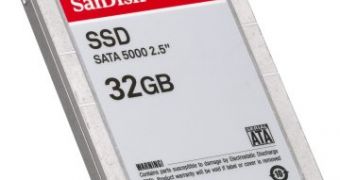In order to keep pace with ever faster and more powerful processors, the computer memory (RAM as it is called) had to undergo several major changes these past few years. The RAM is a very important piece of hardware, as it is the link between the processor and the rest of the storage devices. While secondary storage has a greater capacity, RAM is more speed centered as it needs to be able to serve for the CPU the data it requires and to be able to do this fast. Of course, capacity is another desirable trait of computer memory, as a computer without much RAM will effectively wait for data as it is fetched from the much slower hard drive.
There was a point in memory development when simply making the RAM modules faster and bigger was not the answer to the performance bottlenecks encountered. So the "dual channel memory" architecture was built. This architecture, as its name implies, uses two or more memory modules in parallel and so the total speed and bandwidth is increased. Dual channel memory has already gone through several iterations until now. The latest standard is DDR3 and it was published just a few weeks ago. "Two memory [modules] work in tandem and they both send information to the processor at the same time," said Marc Bernier of memory manufacturer Kingston Technology, as cited by BBC. "This means that the overall bandwidth is increased."
"If someone bought a PC 12 months ago it probably came with DDR, so if you're looking to upgrade your PC you want to be looking at DDR memory," said Chris Gibson of Corsair Memory. "Anything less than 12 months ago will have DDR2 in the system, which is effectively a faster module. In the future - probably six to 12 months away - there'll be DDR3," he said. Besides RAM, there are several other kinds of computer memory and storage types that are constantly improving. Now there is an ever-increasing market for USB flash memories, as they become larger, faster and more affordable. To some point, a flash memory can be used to supplement the RAM, as it is done in Microsoft Windows Vista (the Ready Boost technology). Microsoft is not the only corporation that makes good use of existing flash memories. Samsung and SanDisk are developing hard disk drives replacements known as Solid State Disks (SSD for short).
"A solid state disc is actually a disc that is composed of flash media and a controller. It has no moving mechanical parts whatsoever," explained Doreet Oren of SanDisk. "We see very big delays when you use a hard disc drive. That's because of the seek and latency time of having to actually look on the disk for the different sectors to bring up the very many small files that need to be loaded." "With a flash drive you don't have any of this mechanical delay. So we're talking about an IO per second that is over a hundred times more than that of a hard disk drive." The downside of SSDs is that they are still much more expensive than their older counterparts and that the existing filesystems were written with classical drives in mind, so SSDs cannot take full advantage of their superior speed. Anyway, it is only a matter of time until these problems are resolved.

 14 DAY TRIAL //
14 DAY TRIAL //